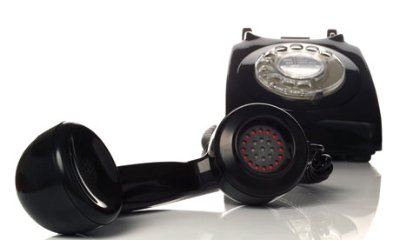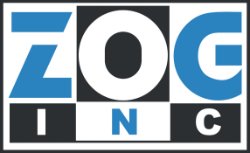Subscribe to the Zog Blog to get news Delivered straight to Your box!
Newsletter Signup
Recent Posts
Archives
Archives
- November 2025 (1)
- September 2025 (1)
- May 2025 (1)
- March 2025 (1)
- November 2024 (1)
- October 2024 (1)
- August 2024 (1)
- July 2024 (1)
- June 2024 (1)
- May 2024 (1)
- December 2023 (2)
- November 2023 (1)
- August 2023 (1)
- June 2023 (1)
- May 2023 (1)
- April 2023 (1)
- December 2022 (4)
- November 2022 (3)
- October 2022 (2)
- September 2022 (2)
- August 2022 (3)
- July 2022 (2)
- May 2022 (3)
- April 2022 (2)
- March 2020 (1)
- November 2019 (1)
- October 2019 (2)
- September 2019 (3)
- August 2019 (2)
- July 2019 (5)
- June 2019 (3)
- May 2019 (2)
- April 2019 (1)
- March 2019 (2)
- August 2018 (2)
- July 2018 (1)
- June 2018 (1)
- May 2018 (4)
- April 2018 (5)
- March 2018 (2)
- February 2018 (3)
- January 2018 (3)
- December 2017 (3)
- November 2017 (2)
- October 2017 (3)
- September 2017 (4)
- August 2017 (2)
- July 2017 (4)
- June 2017 (4)
- May 2017 (5)
- April 2017 (4)
- March 2017 (3)
- February 2017 (4)
- January 2017 (5)
- December 2016 (4)
- November 2016 (5)
- October 2016 (4)
- September 2016 (3)
- August 2016 (4)
- July 2016 (1)

Is Your IT Help Desk Effectively Answering Calls?
I’m sure you’ve heard this advice before: you can’t manage what you don’t measure.
This advice is particularly true for IT help desks—where performance metrics can be to understand whether your users are getting the support they need and that you’re investing your money in a solution that works.
But the hard reality is: few help desks fail to report metrics that are meaningful for you to know whether your teams are having all of their technology problems supported.
For the next few weeks, I will be walking through specific key performance indicators (KPIs) that your IT help desk should be reporting so that you know your users are getting good support and that issues are being resolved quickly.
Today, I specifically wanted to explain a simple, yet highly overlooked help desk performance indicator: Call Abandonment Rate.
What Is Call Abandonment Rate?
Call Abandonment Rate effectively is the percentage of calls that were connected, but were disconnected (hang ups or disconnects) before a caller reaches a help desk technician.
Why Is Help Desk Call Abandonment Rate Important?
Abandoned help desk calls happen more often than you might think. And more importantly, over 20% of users that fail to talk with a help desk technician on a first call opt to resolve issues themselves. What you need to know is how often your users hang up in frustration from waiting on the help desk line too long. But how do you know if users are hanging up impatiently fed up with your help desk?
The answer is in the data your phone system likely automatically collects. And the easiest way to tell how long is too long for users may be in how long your average user is willing to hang on the phone:
Here is simple way to plot out a Call Abandon Curve to tell what your users’ tolerance is for help desk support:
- Gather at least a week’s worth of help desk data (this amount may vary based on call volumes received by your help desk)
- Identify the wait times of users that hung up before talking with a help desk technician.
- Put this data into an Excel spreadsheet.
- Sort the data from shortest call time to longest.
- Calculate the percentage of customers that hung up by the call wait time (you may opt to bin wait times, for instance every minute). Interpret percentages as follows: 0% = every call was received and attended by a technician, 100% = no calls were received and attended by a technician.
- Plot your data in a graph—make the x-axis the amount of time waited on a call and y-axis the percentage of callers to hang up while in the queue
Once you have your data plotted, you should be able to tell at what point your help desk loses calls, which can help inform actions you or your help desk will need to take:
Call Abandonment Curve for IT Help Desk Responders. Data shown are the percentage of people that have not abandoned calls into your help desk (% Calls in Queue) versus the amount of wait time your users experience before hanging up the phone (Wait Time).
What should you expect as an appropriate abandonment rate?
Truthfully, the range of acceptable abandonment rates varies across companies, but typically, enterprise-quality help desks range between 2 and 15% daily abandonment rates. Abandonment rates can be strikingly good at pointing out red flags in your help desk support.
How can you bring down abandonment rates?
Increase your capacity—The simplest way to improve user experience when it comes to ensuring calls are answered quickly and abandonment is minimized is to increase the number of technicians working. Making sure you have sufficient staffing across the day to field simple and highly technical questions and problems is likely the most straight-forward solution.
The problem with increasing your help desk staff? The short answer is obviously higher costs—more W2s, more benefits, more people to manage. But the bigger issue is efficiently allocating dedicated help desk work time. While at highest influx periods, you may need dozens of technicians to support your users, it is quite possible that later in the day or at night, you might only need one or a handful. If you have 20 technicians on staff, you are likely paying 20 full-time salaries (and only utilizing the majority of those staff members at short periods throughout the work day).
Chang your welcome message—while ideally you should consider having calls received live on the spot, Note: ZogDesk answers calls live), in the event that you need to play a recorded messages, you should consider the type of message you relay. Studies have shown that generic messages like “Your call is important” significantly turn off callers.
Alter the frequency of recorded messages while a user is in a que—If your technology allows it, it may be worth experimenting with the duration between recorded messages while a user is queued to speak with an IT help desk technician. If you need recorded messages to help handle call volumes, consider figuring out what works best for your users. For example, consider the following recording cycle while one of your users is waiting in a First automated message:
- 1 minute of on-hold music
- Second automated message
- 2 minutes of on-hold music
- Third automated message
- 4 minutes of on-hold music
Increase the initial ring time—while good help desks should try to respond to user calls quickly (IT help desks should try to answer calls within 20 seconds (4 rings)), one way of getting the majority of calls answered may be to increase call responses in order to ensure that all calls are being responded to rather than having a caller automatically directed to a recorded talk track. Recorded messages have been shown to irritate or ‘turn off’ users from sticking on a call.
Allow your users to opt for a call-back—giving your users an option to request a call-back can reduce the level of call abandonment on IT help desk calls. The issue with call-backs, is your IT support may have trouble getting ahold of your user once they hang up.
How certain are you that your help desk is meeting your expectations when it comes to KPIs? What all should you look for to determine whether your help desk is working? Contact us TODAY for a free IT Help Desk Health Assessment.


Leave a Comment
Your email address will not be published. Required fields are marked *